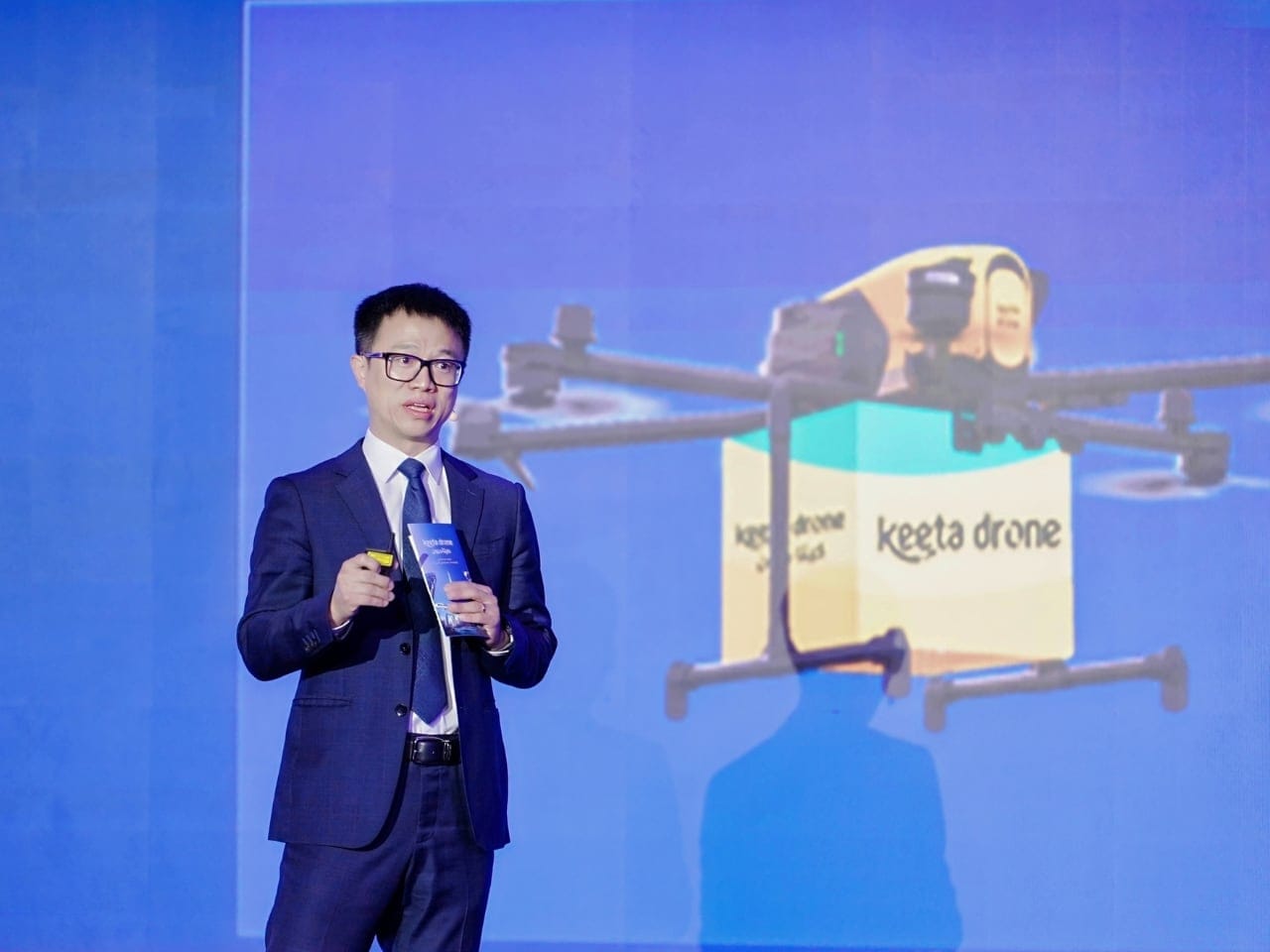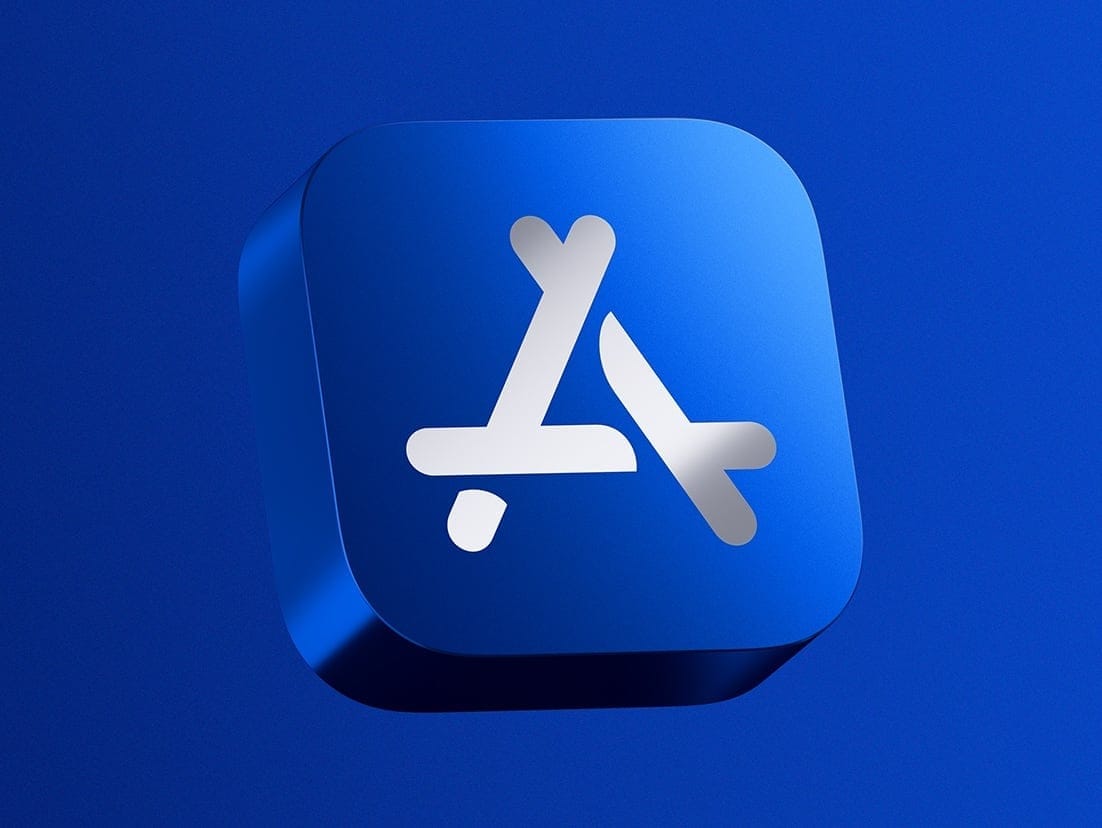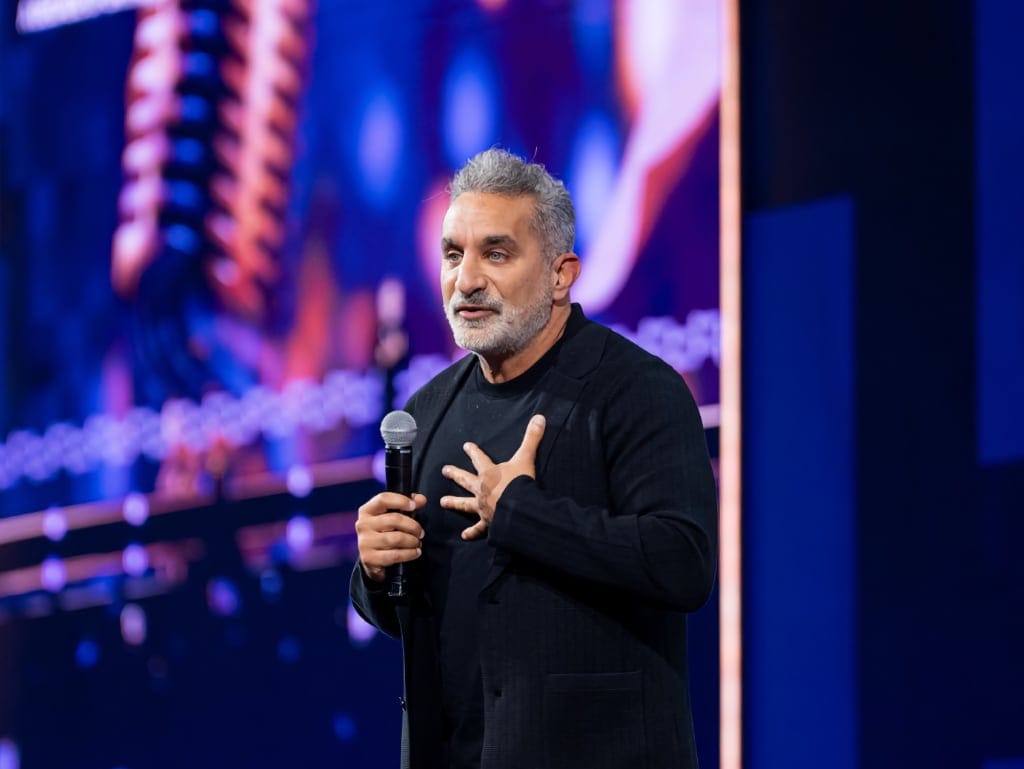Dubai wants 70% of the city on drones by 2030. Keeta thinks it can pull it off.
Keeta Drone’s president says drone delivery is central to Dubai’s sustainable urban plans, with BVLOS routes, AI simulations and 15-minute orders already live in the UAE.

Dubai already does skyscrapers, malls and driverless trains. Now it wants the sky itself to handle your takeaway.
- Keeta Drone has Dubai’s first BVLOS commercial drone delivery licence and is already live in Dubai Silicon Oasis and Nad Al Sheba.
- DCAA has proposed that by 2030, drone delivery should cover 70% of Dubai — Keeta says it wants to help make that real.
- Keeta’s fourth-gen autonomous drones are built for 50°C heat, sand, wind and even night operations.
- An AI simulation platform and visual navigation system help the drones “see” and land safely in complex urban areas.
- Across China, Hong Kong and Dubai, Keeta has flown over 700,000 orders on 65 routes, cutting delivery times to around 15 minutes.
Speaking at Dubai Airshow 2025, Dr Yinian Mao, Vice President of Meituan and President of Keeta Drone, laid out a very specific vision: by 2030, drones should cover 70% of Dubai for last-mile delivery, under a proposal from the Dubai Civil Aviation Authority (DCAA). Keeta Drone, a Meituan subsidiary, is positioning itself as one of the main systems that could make that happen.
From winning Dubai’s first BVLOS (Beyond Visual Line of Sight) commercial drone delivery licence to running AI-driven simulations of the city’s heat and sandstorms, Keeta is treating Dubai as what Mao calls a “singularity” for the global low-altitude economy.
Here’s what is already live, what is coming next, and what it could mean for urban logistics across the Middle East.
Dubai wants drones in 70% of the city by 2030
Dubai isn’t playing around with drone pilots on one or two rooftops. The target on the table is big and very clear.
- DCAA has proposed that drone delivery should cover 70% of Dubai by 2030.
- Keeta Drone sees itself helping to deliver that coverage, starting with Dubai Silicon Oasis and Nad Al Sheba.
- Dubai was chosen as Keeta’s first overseas base, thanks to a proactive aviation regulator and a friendly testbed for new services.
- The company frames drone delivery as part of sustainable, low-altitude urban logistics rather than a gimmick for one-off stunts.
That 70% figure sets expectations for both regulators and operators. Keeta already runs live routes in Dubai Silicon Oasis and a new route in Nad Al Sheba, where drones carry food from Avenue Mall to a dedicated landing point by Nad Al Sheba Grand Mosque. It is a small example of what a dense network of “drone ports”, charging sites and automated docks could look like if low-level airspace is opened up at scale.
For more on how UAE regulators are thinking about drones and air taxis, tbreak has already covered the early rulebook for air corridors in Abu Dhabi in UAE drafts rules for autonomous air taxis and drones.
From riders to robots: inside Keeta’s low-altitude network
Keeta Drone didn’t appear out of nowhere. It grew out of Meituan, the world’s largest food delivery platform by volume.
- Meituan hit 150 million delivery orders in a single day in China, all handled by human riders.
- Keeta Drone spun up in 2017, when Meituan was already doing 10 million orders a day and wanted a more autonomous future.
- Since then, Keeta has secured commercial licences from China’s CAAC and Dubai’s DCAA.
- By October 2025, Keeta had:
- 65 delivery routes
- 700,000+ completed drone orders
- Operations across Dubai, Hong Kong, Shenzhen, Beijing, Shanghai and Guangzhou
- Over 700 partner brands and 130,000+ product options
As instant retail grows, you can’t scale only by adding more riders on the road. Keeta’s drones aim to cut average delivery time to around 15 minutes, roughly half the traditional half-hour benchmark. In practice, that means scheduling dozens of flights across dense neighbourhoods, all without putting more vehicles into traffic or burning more fuel.
Keeta’s push also fits into a wider arms race over last-mile speed in the UAE, from rapid grocery services to smarter tools for riders. If you’re tracking how the country’s delivery stack is changing, it’s worth looking at both the consumer side with services like Careem’s fast grocery and delivery launches and rider-side upgrades like du Pay and talabat’s digital wallet for delivery workers.
Built for 50°C heat, sandstorms and night flights
Drones built for mild, green suburbs don’t last long in Dubai’s summer. Keeta says it has reworked both the aircraft and the ground system for Gulf conditions.
- Keeta is now on its fourth generation of delivery drone, developed in-house by Meituan.
- The aircraft is licensed to operate in all cities across China, day and night.
- The “M-port” second-generation landing and storage unit has:
- 19 buffer compartments
- Temperature control from –10°C to 50°C
- Design tuned for Middle East weather
- The drones are adapted to handle:
- Temperatures above 50°C
- High humidity
- Sand and wind, including sandstorms
- Night navigation is already tested in Shenzhen and is planned for Dubai to match local late-night ordering habits.
In simple terms, Keeta isn’t just dropping Chinese hardware into Dubai and hoping for the best. The system is built as a full stack: the drone, the automated landing port and the cloud scheduler.
This is important for the UAE, where nighttime food orders and extreme weather are normal. The M-port units act as both charging stations and mini-warehouses, keeping orders within a safe temperature range before final pickup.
Night flights are a key part of that stack. Keeta has been testing night navigation in Shenzhen, one of the busiest city skylines in the world, and now wants to bring that capability to Dubai so drones can keep flying when most people actually order food.
Safety first: AI simulations and visual navigation
If drones are going to fly over parks, mosques and residential blocks, regulators want proof they can handle the worst-case scenarios.
- Keeta runs an AI-driven simulation system for local terrain and weather.
- Millions of training cycles help surface safety risks that would need hundreds of thousands of real flights to detect.
- The drones use a visual navigation system that blends:
- Onboard cameras and algorithms
- Satellite navigation
- Inertial navigation
- This lets them “see” and navigate even with a poor signal or heavy interference.
- AI also helps detect flat landing zones in real time and pick safe emergency landing spots.
Instead of relying only on test flights, Keeta’s team mirrors the environment in software. One side of the screen is the drone’s view; the other is the simulated world, tuned so closely that even an audience at Dubai Airshow had trouble telling which was which. The visual navigation system gives the drones a way to keep flying even when GPS is patchy or blocked by towers.
On the ground, this simulation work helps both engineers and regulators understand how a drone reacts to rare situations: sudden wind gusts, unexpected obstacles, and blocked landing pads. That matters when you’re asking a city to let you fly over crowded districts on a daily basis.
Policy is the real enabler for drone delivery
For all the talk of AI, sensors and hardware, Mao was clear that none of this works without regulators willing to move.
- Keeta’s commercial operations are built on Beyond Visual Line of Sight (BVLOS) approvals.
- The company’s journey moved from:
- VLOS (Visual Line of Sight): 2 pilots for 1 drone
- EVLOS (Extended Visual Line of Sight): 3 pilots for 5 drones
- BVLOS remote operations: 1 pilot for 40+ drones
- Dubai’s DCAA has supported Keeta since early trials at GITEX 2023 through to the commercial licence in December 2024.
- Globally, similar low-altitude regulatory frameworks are emerging in:
- Europe
- The United States (e.g. proposed Part 108 and Part 146 rules)
- China (CCAR-92)
Mao’s argument is that progressive policy is not just “nice to have”; it’s the first hard requirement. Once drones can legally share the sky in a safe, repeatable way, the business use cases follow. Dubai’s mix of ambitious targets, centralised planning and appetite for new services makes it an obvious place to try this at scale.
If you care about how those policies get written, we’ve already seen Abu Dhabi’s early work on layered airspace and test sites in our look at UAE’s autonomous air taxi and drone rules.
What it means for the Middle East’s urban future
Keeta Drone isn’t just here to shave a few minutes off shawarma delivery. The company frames drone logistics as part of a broader low-altitude economy.
- Drone delivery can support:
- Lower emissions compared to traditional vehicle-based last-mile trips
- Less road congestion in dense urban zones
- Faster service to areas where roads are busy or awkward to access
- New service models for offices, parks, campuses and tourist areas
- Keeta already serves:
- Offices and residential communities
- Tourist attractions and municipal parks
- Campuses and libraries
- In the Middle East, Keeta plans to:
- Integrate more merchants through the Keeta platform
- Expand product categories beyond food
- Roll out more routes from pilot areas to city-wide coverage
- Align with regional carbon-reduction goals and smart city plans
As the network grows, it becomes less about “try a drone once for the novelty” and more about integrated logistics — air and ground working together. For residents, you might not notice the infrastructure shift, apart from shorter delivery times and less bike traffic on certain stretches. For city planners, this is another lever to hit climate goals and rethink how goods move without clogging the roads.
The bigger question is how many Middle East cities will follow Dubai’s lead. With Saudi Arabia already experimenting with low-altitude openings and regulators in Europe, China and the US lining up similar frameworks, the region’s urban skies are likely to get much busier over the next five years.
FAQs
What is Keeta Drone and how is it linked to Meituan?
Keeta Drone is the drone delivery arm of Meituan, a Chinese tech and retail company best known for operating the world’s largest food delivery platform by volume. Keeta started in 2017 to build an autonomous, low-altitude logistics network that can work alongside Meituan’s rider fleet.
Where is Keeta Drone already operating?
As of the end of October 2025, Keeta Drone runs 65 routes across Dubai, Hong Kong, Shenzhen, Beijing, Shanghai and Guangzhou. In Dubai, routes currently include Dubai Silicon Oasis and Nad Al Sheba, with food orders flown from Nad Al Sheba Avenue Mall to a landing point near Nad Al Sheba Grand Mosque.
How fast are Keeta’s drone deliveries?
Keeta says its drones deliver orders in around 15 minutes on average. That’s roughly twice as fast as a typical 30-minute delivery window for conventional last-mile services, thanks to direct flight paths and automated scheduling across multiple drones.
How does Keeta keep drone flights safe in cities?
The company uses several layers of technology for safety. Its drones include redundant systems for emergencies, visual navigation that combines cameras, satellite signals and inertial data, and AI to detect flat landing zones. An AI-based simulation platform runs millions of virtual flights over local terrain to identify risks without relying only on live test flights.
Why is Dubai important for Keeta Drone and the low-altitude economy?
Dubai is Keeta’s first overseas base. Mao describes the city as a “singularity” for the low-altitude economy because it combines fast-moving policy, advanced technology and a supportive business environment. With DCAA proposing drone delivery coverage of 70% of the city by 2030, Dubai offers Keeta a live testbed for dense, sustainable drone logistics that could be exported to other Middle East cities later.
Subscribe to our newsletter to get the latest updates and news






